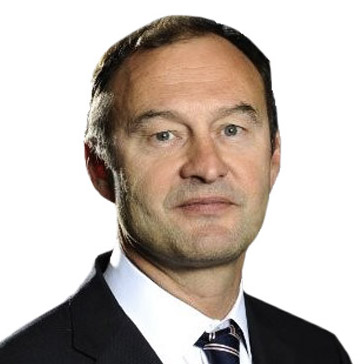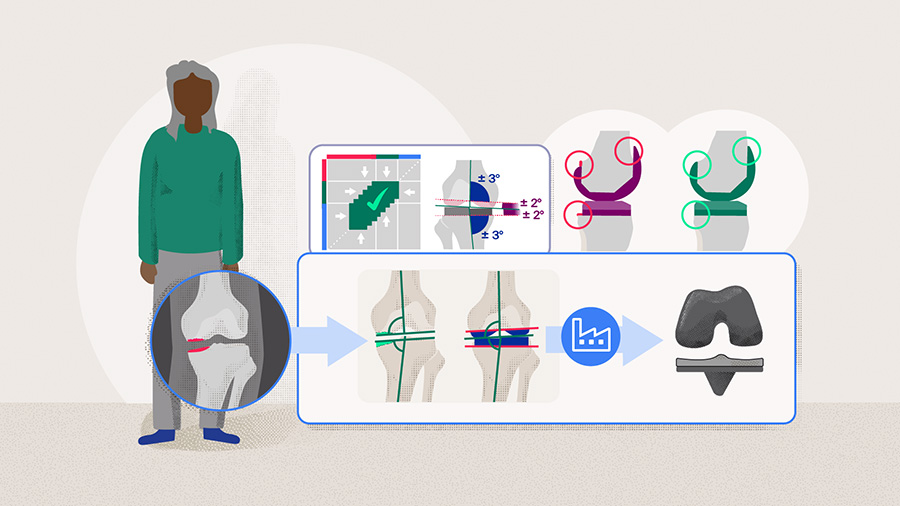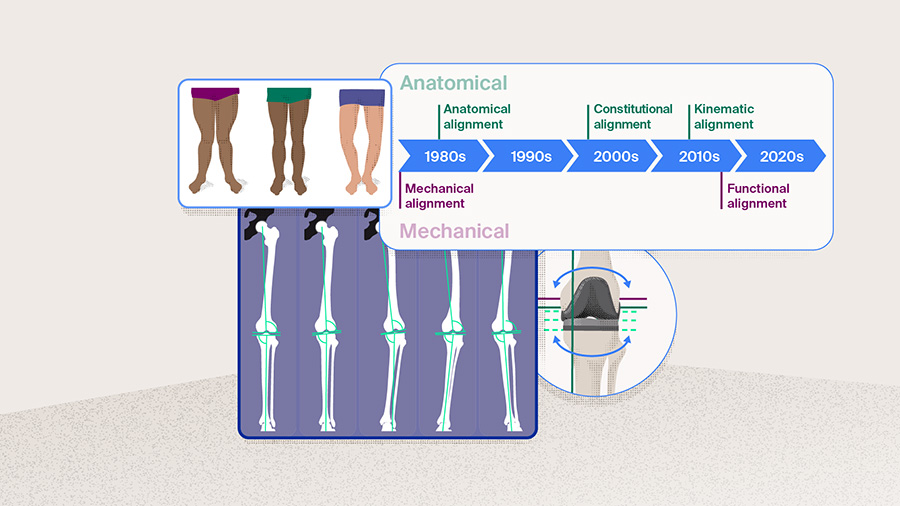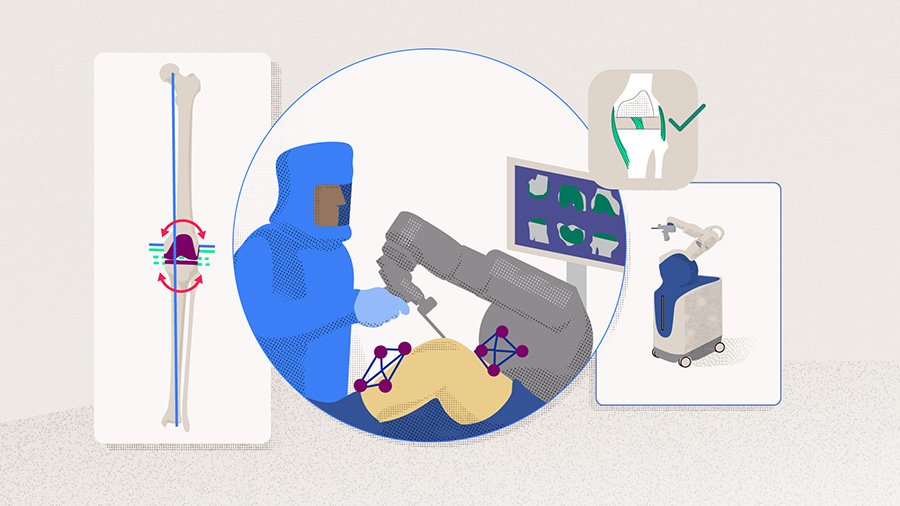The use of custom implants for total knee arthroplasty
Preview
Alignment philosophy for total knee arthroplasty (TKA) has progressively evolved in recent years with a better understanding of the human morphology and the emergence of three-dimensional (3D) imaging and modeling, robotic-assisted surgery, and patient-specific implants that offer a customized and personalized approach to TKA. Custom TKA allows surgeons to consider and restore the patient's native limb alignment. Various preoperative aspects must be considered for this customization approach, including the type of imaging to create the 3D model, the alignment approach to be fostered, maintaining alignment in the 'safe zone', and the design and timing of manufacturing the custom implants. In this article, Michel Bonnin, an orthopedic surgeon at the Centre Orthopédique Santy Lyon, France takes the reader through all these aspects and shares his experience and ideas for the future of custom TKA .

Michel Bonnin
Centre Orthopédique Santy
Lyon, France
The paradigm shift
In the last two decades surgeons have progressively and, yet unconsciously, shifted from a systematic alignment approach for TKA to a more personalized alignment. But why the shift? Various studies recognized that the human morphology varies enormously [1–3], more than we previously thought, so applying a systematic approach of the same measurements and same implants to restore anatomy in all patients is inefficient. Very few knees can follow the equation of 90° + 90° = 180°, therefore we now know that this approach will not restore the native anatomy. In fact, many patients have a natural alignment outside of the ± 3° valgus or varus range and correcting this alignment to conform to 0° will only provoke more patient discomfort, pain, and reduced quality of life [4]. Moreover, another short fall in this approach is that the term 'biomechanical alignment' is a misconception, because simply measuring angles on a two-dimensional (2D) x-ray does not provide valid biomechanical insight into the functioning joint; a more geometrical construction in 3D must be adopted to appreciate each patient's natural alignment, anatomy, and biomechanics.
Accepting this shift to kinematic alignment (KA) and constitutional alignment (CA) with personalized planning and custom implants means that three main issues need to be addressed:
- How much varus is too much and what is the acceptable limit? Several papers have tried to answer this question. One well-cited paper indicated that maintaining alignment within ± 3° improves patient outcomes and implant survival [5]. However, the short sight in this and other papers is that alignments were measured on short-film x-rays, while long-leg weight-bearing x-rays are needed to determine the full alignment.
- Distinguishing between constitutional versus arthritic deformity. Previously, all plannings were based on 2D x-rays. However, 2D x-rays show only the global deformity, which is a combination of the constitutional and the arthritic deformity including bone wear, laxity, knee rotation, loss of flexion etc. If the surgeon cannot differentiate the constitutional deformity from the arthritic deformity, the final TKA alignment can hardly reproduce the native (prearthritic) alignment. Unfortunately, very little of the literature differentiates between arthritic and prearthritic deformity, because of the lack of tools.
For example, if a patient has a 16° global varus alignment due to a constitutional tibial varus, a 90° tibial cut will result in a very asymmetrical resection between the medial and lateral plateaus and will remove a lot of bone laterally, resulting in lateral laxity, tightness on the medial side, and difficulty for balancing ligaments. In such a patient, a varus cut at 85° will provide a more symmetrical resection with well-balanced ligaments and a good quality remaining bone. If you take another patient where the same 16° of global varus deformity is due exclusively to the bone wear on the medial tibial plateau, a 90° cut would allow for a tibial baseplate to be fitted, the gap to be filled, and compensate for the bone wear, ultimately restoring the native anatomy. However, if a varus cut is performed in that patient, the medial tibial plateau will sit on weak bone and has a high risk of failure. - Off-the-shelf TKA implants are not designed to be positioned differently in each patient: When using KA technique, the same standard prosthesis will be implanted slightly differently in all patients, which can create an overhang of posterior condyles or trochlea, and a patellofemoral maltracking due to the deviation of the trochlea [6] and to the internal femoral rotation relative to the transepicondylar axis [7].
How do surgeons overcome these issues? Bonnin and his colleagues strongly believe that there is a need to bridge the two concepts so that if a surgeon adopts a CA, then a custom TKA should also be used [8, 9]. To address the above three problems, surgeons need to adapt and incorporate planning from CT scans and 3D analysis, generate anatomical implants, and design implants that adapt to the patient's native alignment. Thus, the aim of a custom implant is to reproduce the native shape of the knee, including the native radii of curvature both in the coronal and sagittal planes, the size of the trochlear, the rotation of the femur, the asymmetry of the femoral condyles and tibia, and the native orientation of the joint line.
Read the full article with your AO login
- Considerations and techniques for custom total knee arthroplasty
- What does this look like in reality? Is custom total knee arthroplasty superior to traditional alignment methods?
- Future perspectives
- Conclusion
Additional AO resources
Access videos, tools, and other assets.
- Videos
- Upcoming events: AO Recon Course finder
Contributing experts
This series of articles was created with the support of the following specialists (in alphabetical order):

Michel Bonnin
Centre Orthopédique Santy
Lyon, France

Sébastien Lustig
Lyon North University Hospital
Lyon, France

Charles Rivière
Clinique du Sport Bordeaux-Mérignac
Mérignac, France
This issue was written by Antia Rodriguez-Villalon and Laura Kehoe, AO Innovation Translation Center, Clinical Science, Switzerland.
References
- Hirschmann MT, Hess S, Behrend H, et al. Phenotyping of hip-knee-ankle angle in young non-osteoarthritic knees provides better understanding of native alignment variability. Knee Surg Sports Traumatol Arthrosc. 2019 May;27(5):1378–1384.
- Hirschmann MT, Moser LB, Amsler F, et al. Phenotyping the knee in young non-osteoarthritic knees shows a wide distribution of femoral and tibial coronal alignment. Knee Surgery, Sports Traumatology, Arthroscopy. 2019 2019/05/01;27(5):1385–1393.
- Moser L, Hess S, Behrend H, et al. Functional knee phenotypes - A novel classification for the lower limb alignment based on the native alignment in young non-osteoarthritic patients. Orthopaedic Journal of Sports Medicine. 2020;8(5_suppl4):2325967120S2325900301.
- Bonnin MP, Basiglini L, Archbold HA. What are the factors of residual pain after uncomplicated TKA? Knee Surg Sports Traumatol Arthrosc. 2011 Sep;19(9):1411–1417.
- Meding JB, Wing JT, Ritter MA. Does high tibial osteotomy affect the success or survival of a total knee replacement? Clin Orthop Relat Res. 2011 Jul;469(7):1991–1994.
- Rivière C, Lazic S, Boughton O, et al. Current concepts for aligning knee implants: patient-specific or systematic? EFORT Open Rev. 2018 Jan;3(1):1–6.
- Park A, Duncan ST, Nunley RM, et al. Relationship of the posterior femoral axis of the "kinematically aligned" total knee arthroplasty to the posterior condylar, transepicondylar, and anteroposterior femoral axes. Knee. 2014 Dec;21(6):1120–1123.
- Bonnin MP, Beckers L, Leon A, et al. Custom total knee arthroplasty facilitates restoration of constitutional coronal alignment. Knee Surgery, Sports Traumatology, Arthroscopy. 2022 2022/02/01;30(2):464–475.
- Sappey-Marinier E, Tibesku C, Selmi TAS, et al. Custom Total Knee Arthroplasty. In: Rivière C, Vendittoli PA, ed. Personalized Hip and Knee Joint Replacement. Cham (CH): Springer Copyright 2020, The Author(s). 2020. 255-264.
- Daxhelet J, Aït-Si-Selmi T, Müller JH, et al. Custom TKA enables adequate realignment with minimal ligament release and grants satisfactory outcomes in knees that had prior osteotomies or extra-articular fracture sequelae. Knee Surg Sports Traumatol Arthrosc. 2021 May 27.
- Ratano S, Müller JH, Daxhelet J, et al. Custom TKA combined with personalised coronal alignment yield improvements that exceed KSS substantial clinical benefits. Knee Surg Sports Traumatol Arthrosc. 2022 Sep;30(9):2958–2965.
- Moret CS, Hirschmann MT, Vogel N, et al. Customised, individually made total knee arthroplasty shows promising 1-year clinical and patient reported outcomes. Arch Orthop Trauma Surg. 2021 Dec;141(12):2217–2225.
- Victor J, Vermue H. Custom TKA: what to expect and where do we stand today? Arch Orthop Trauma Surg. 2021 Dec;141(12):2195–2203.




